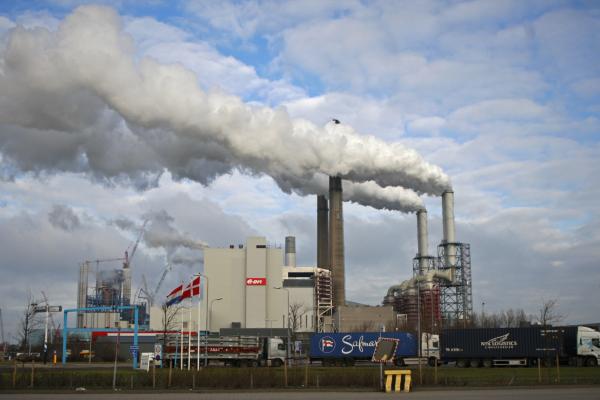
UNEP official: Every dollar invested in reviving degraded lands brings up to $30 in returns
Elizabeth Maruma Mrema, Deputy Executive Director of the United Nations Environment Program (UNEP), said every ...

The European Union has adopted new rules to cut emissions of cars, industries and buildings. The EU Council has adopted the Euro 7 regulation, which lays down rules on emission limits for road vehicles and battery durability. This is the last step in the decision-making procedure.
The text adopted covers cars, vans and heavy-duty vehicles in one single legal act and aims to further lower air pollutant emissions from exhaust fumes and brakes. The new regulation also establishes stricter lifetime requirements.
The Euro 7 regulation establishes rules for the exhaust emissions of road vehicles, but also for other types of emissions such as tyre abrasion and brake particle emissions. It also introduces requirements for battery durability.
For cars and vans, the regulation keeps the existing Euro 6 exhaust emission limits but introduces stricter requirements for solid particles. For heavy-duty buses and lorries, the regulation imposes more stringent limits for various pollutants, including some that have not been regulated until now, such as nitrous oxide (N2O).
In addition, Euro 7 introduces stricter limits for particle emissions produced when braking, with specific limits for electric vehicles. The new rules also include stricter lifetime requirements for all vehicles in terms of both mileage and lifetime.
The EU Council has also adopted the revised directive on industrial emissions (IED) and the regulation on the establishment of an industrial emissions portal (IEP), two complementary pieces of legislation aimed at regulating and monitoring the environmental impact of industrial activities.
The new rules will offer better protection of human health and the environment by reducing harmful emissions from industrial installations, while promoting energy efficiency, a circular economy and decarbonization.
They will also improve environmental data reporting by upgrading the existing European pollutant release and transfer register (E-PRTR) in order to establish a more comprehensive and integrated industrial emissions portal.
The EU Commission has welcomed the final adoption of the strengthened Energy Performance of Buildings Directive, another milestone of the European Green Deal.
This legislation sets the framework for Member States to reduce emissions and energy use in buildings across the EU, from homes and workplaces to schools, hospitals and other public buildings.
This will help improve people’s health and quality of life. The revised Directive sets ambitious targets to reduce the overall energy use of buildings across the EU, taking into account national specificities. It leaves in Member States’ hands which buildings to target and which measures to take. It will boost the demand for clean technologies made in Europe, and create jobs, investment, and growth.
Each Member State will adopt its own national trajectory to reduce the average primary energy use of residential buildings, by 16% by 2030 and 20-22% by 2035. For non-residential buildings, they will need to renovate the 16% worst-performing buildings by 2030 and the 26% worst-performing buildings by 2033.
EU Member States will have the possibility to exempt certain categories of residential and non-residential buildings from these obligations, including historical buildings or holiday homes. Citizens will be supported in their efforts to improve their homes. The Directive requires the establishment of one-stop shops for advice on building renovation and provisions on public and private financing will make renovation more affordable and feasible.
The Directive will boost Europe’s energy independence, in line with the REPowerEU Plan, by reducing our use of imported fossil fuels. The revised Directive will make ‘zero-emissions’ the standard for new buildings.
All new residential and non-residential buildings must have zero on-site emissions from fossil fuels, as of 1 January 2028 for publicly-owned buildings and as of 1 January 2030 for all other new buildings, with a possibility for specific exemptions.
The strengthened Directive contains new provisions to progressively phase-out fossil fuels from heating in buildings and boost the deployment of solar power installations, taking into account the national circumstances.
Member States will also have to ensure that new buildings are ‘solar ready’. Subsidies for the installation of stand-alone boilers powered by fossil fuels will not be allowed as of 1 January 2025. It will also boost the uptake of sustainable mobility thanks to provisions on pre-cabling, recharging points for electric vehicles and bicycle parking spaces.
Better planning of renovations and technical and financial support will be crucial to trigger a Renovation Wave across the EU, and this is foreseen under the revised Directive. To fight energy poverty and bring down energy bills, financing measures will have to incentivize and accompany renovations and be targeted in particular at vulnerable customers and worst-performing buildings, in which a higher share of energy-poor households live.
Elizabeth Maruma Mrema, Deputy Executive Director of the United Nations Environment Program (UNEP), said every ...
President Abdel Fattah El Sisi issued eight directives on the Labor Day to ensure providing ...
Paysky, the leading digital payment solutions provider, was named among Forbes Top 50 Fintech companies ...


اترك تعليقا